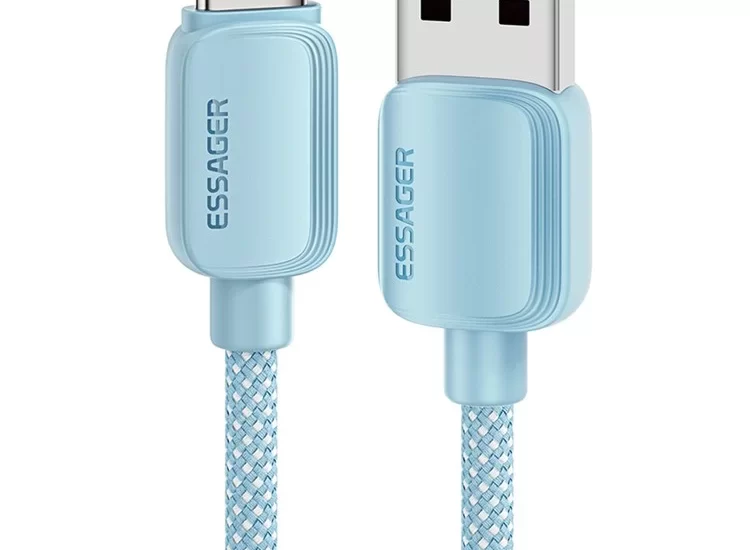In the world of gadgets and tech, having the right charging cable can make or break your experience. Whether you’re charging your phone, transferring data, or connecting devices, the type of cable you use matters. Today, we’ll break down the differences between three essential cables: USB Type-C to Type-A, USB C to USB A, and Type-C to Type-C charging cables.

1. USB Type-C to Type-A Cable: Bridging Old and New
The USB Type-C to Type-A cable is perfect for anyone with newer devices that feature USB-C ports but still rely on traditional USB Type-A ports for charging or data transfer.
- Compatibility: This cable allows you to connect modern USB-C devices (like smartphones and tablets) to older USB-A ports on laptops, desktop computers, and wall chargers.
- Speed: While you may not get the ultra-fast charging speeds of a pure USB-C setup, these cables are efficient for syncing data and charging at standard speeds.
- Versatility: It’s a great option for users who have both old and new tech, making it easy to switch between different devices.
2. USB C to USB A Cable: A Common Essential
The USB C to USB A cable is similar to the Type-C to Type-A cable, but it’s increasingly found as a standard charging solution for many devices.
- Perfect for Daily Use: Ideal for charging smartphones, tablets, and various gadgets that come with USB-C ports but still need to connect to USB-A power sources.
- Widespread Compatibility: Almost every household has USB-A ports in their computers, car chargers, or wall adapters, making this cable a must-have for anyone transitioning to USB-C devices.
- Affordable and Convenient: These cables are cost-effective and readily available, making them a popular option for regular charging and data transfer needs.
3. Type-C to Type-C Charging Cable: Fast, Future-Proof, and Powerful
The Type C to Type C charging cable is the go-to choice for users who demand fast charging and high-speed data transfers.
- Fast Charging: With USB-C becoming the standard for modern devices, Type-C to Type-C cables support faster charging speeds (like Quick Charge and Power Delivery) for devices like the latest smartphones, tablets, and laptops.
- High-Speed Data Transfer: These cables offer faster data transfer rates, which is especially important for transferring large files between devices, such as from a laptop to an external SSD.
- Universal Compatibility: Whether you’re charging an Android phone, a MacBook, or other USB-C-enabled devices, Type-C to Type-C cables are future-proof, ensuring that your cable won’t become obsolete anytime soon.
Conclusion
When it comes to choosing the right charging cable, it’s important to consider the devices you use most frequently. A USB Type-C to Type-A cable is perfect for those who need to connect new gadgets to older computers and chargers, while a USB C to USB A cable is a reliable daily charging solution. If you’re looking for speed and future-proofing, the Type-C to Type-C charging cable is your best bet for fast charging and high-speed data transfers. With the right cable in hand, you’ll be ready to power up your devices efficiently and keep your tech game strong.
Comments on “Your Guide to USB Type-C to Type-A, USB C to USB A, and Type-C to Type-C Charging Cables”